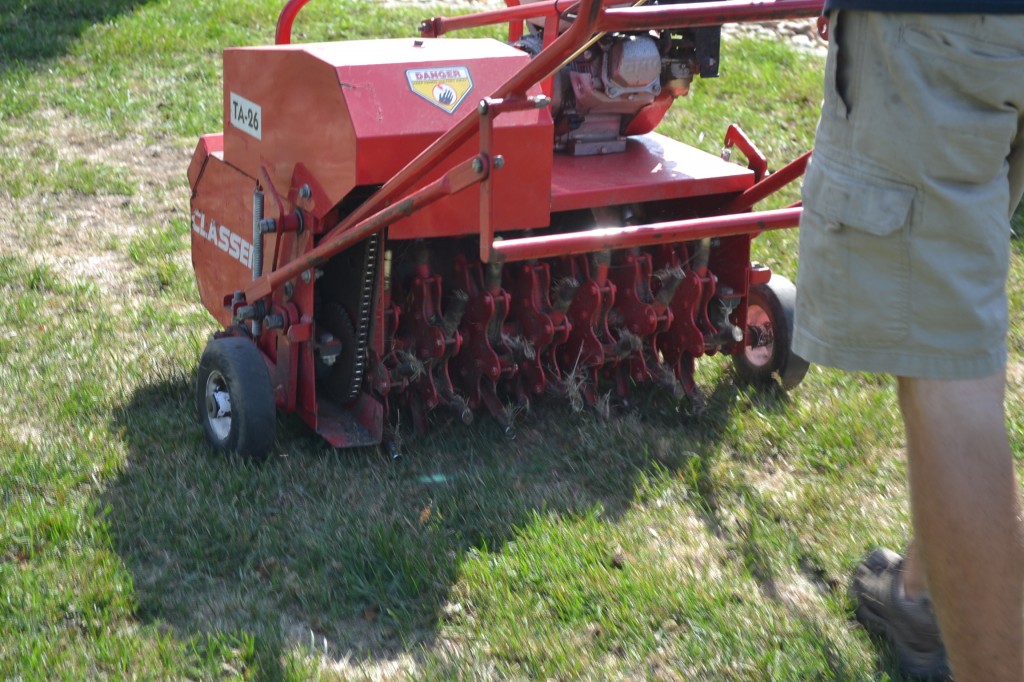Core aeration is one of the best ways to keep your turf healthy. Over time, your soil can become compact. When this happens, compaction reduces the grassroots ability to take in water and nutrients. If your soil is compact, water will run off instead of soaking in. Fertilizing your lawn will be less effective because the product cannot penetrate the soil. Fertilizer may wash away before the ground absorbs it. Core aeration is one of the easiest ways to promote new root generation.
Core aeration removes lawn plugs about 1″ to 3″ in length from your lawn and distributes them over the top of your yard. These plugs will naturally break down over several weeks. The holes created by removing the plugs allow air, water, and other vital nutrients to reach the root system of the grass plant. Over time your lawn may become compacted, and one of the best ways to reduce that compaction is through core aeration. We recommend aerating your yard at least once a year.
Core aeration is recommended in the spring and fall. If you are aerating in the spring, it needs to be done before applying a pre-emergent crabgrass control product. If you aerate after applying a pre-emergent product, you will have essentially broken the barrier created by the pre-emergent products. Fall core aeration needs to be done at least a month in advance before the ground freezes. If you aerate too close to winter, pockets created by the aeration will not have filled in yet. Leaving exposed grass roots can cause die out.
Aeration plugs do not need to be removed from the lawn. They will break down naturally over several weeks. When the dirt breaks down, it helps to decompose some of the thatch layer. This natural process helps set an appropriate thatch layer.
The benefits of core aeration include:
- Reduction in soil compaction.
- Increased movement of air, water, and other vital nutrients into the root system.
- Helps to reduce excessive thatch build-up.
- Stimulates new root development.

